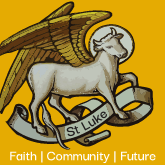 Ordinary Time is the longest season in the Church’s year. Comprising thirty-three weeks, it is divided into two sections; one short and the other very long. The weeks between the Christmas and Lenten seasons are the shorter part of Ordinary Time while the weeks between Pentecost and the Advent season form the long stretch. The word ‘ordinary’ comes from the word ordinal which means ‘counted’. Each week is known by a number, e.g. the 20th Sunday in Ordinary Time. The use of the term Ordinary Time in our liturgical calendar distinguishes it from the other seasons—Advent, Christmas, Lent and Easter—which focus on particular aspects of Christ’s life: his birth, suffering, death and resurrection. Ordinary Time celebrates Jesus’ teaching and ministry. It gives us time to reflect on how we live as Christians. We have thirty-three weeks to examine and ‘order’ our lives while we focus on a particular Gospel, in a three-year cycle, and to enter it deeply. We are presently in Year A, the year of Matthew.
Ordinary Time is the longest season in the Church’s year. Comprising thirty-three weeks, it is divided into two sections; one short and the other very long. The weeks between the Christmas and Lenten seasons are the shorter part of Ordinary Time while the weeks between Pentecost and the Advent season form the long stretch. The word ‘ordinary’ comes from the word ordinal which means ‘counted’. Each week is known by a number, e.g. the 20th Sunday in Ordinary Time. The use of the term Ordinary Time in our liturgical calendar distinguishes it from the other seasons—Advent, Christmas, Lent and Easter—which focus on particular aspects of Christ’s life: his birth, suffering, death and resurrection. Ordinary Time celebrates Jesus’ teaching and ministry. It gives us time to reflect on how we live as Christians. We have thirty-three weeks to examine and ‘order’ our lives while we focus on a particular Gospel, in a three-year cycle, and to enter it deeply. We are presently in Year A, the year of Matthew.
Year A – The Gospel of Matthew
Year B – The Gospel of Mark
Year C – The Gospel of Luke
The weekday Masses are organised in a two-year cycle: Year I (odd years) and Year II (even years). The first readings and the gospels of weekdays are read in continuity, so that one day’s readings follows the next. In this way we are enabled, over time, to enter deeply into the spirit of the readings.
GREEN, the colour of Ordinary Time, tells us much about its significance in the Church’s life. It is the rich colour of growth and new life. Ordinary Time deserves to be lived extraordinarily—in the depths of our own hearts, in our families and in the worshipping community. It is important for us to immerse ourselves deeply in the spirituality of Ordinary Time because it contains the essence of who we are in the ‘everydayness’ of our Christian lives.
c.f.: http://www.resourcemelb.catholic.edu.au/object.cfm?o=125&pid=639&showrm=true&uptam=false





 17 Stevens Road, Vermont VIC 3133 | 03 9412 8499
17 Stevens Road, Vermont VIC 3133 | 03 9412 8499